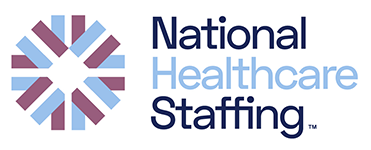Another study estimates that the US will face a shortage of 122,000 physicians by 2032. The significant need will certainly create opportunities for those interested in a medical career. However, for healthcare organizations that want to grow and sustain their workforce, the next decade may pose some challenges.
There are four trends that will affect how healthcare organizations hire and retain their most precious asset—their people.
1. Non-clinical positions will be crucial to support the whole patient.
As the healthcare industry shifts to value-based care, providers are taking a more comprehensive approach to meeting patient needs, including providing social work assistance, behavioral health, and nutrition advice. The growing role of data analytics within healthcare is also requiring more workers with IT and data analytics expertise.
The evolution of on-site care provided by employers offers a prime example of this trend. A survey of worksite medical clinics by Mercer in 2018 found that one-third of organizations with 5,000 or more employees provided general medical clinics at or near the worksite. Twenty-five percent of these clinics had registered dieticians or nutritionists on staff, up from 15 percent in 2015. A full third also employed health coaches.
These new resources empower patients to make better decisions about their health, and ultimately improve it. But they also require employers to increase their non-clinical staff to meet these needs.
2. To focus on direct patient care, providers will reduce administrative overhead.
With the expected shortage of healthcare workers, providers will prioritize patient needs—and look for ways to reduce time-consuming administrative tasks. Currently, new technology is often adding to staff burden, especially where EHR systems and data are fragmented. While technology will ultimately streamline clinic work, employees will increasingly leverage digital tools to increase their impact. Primary care is likely to evolve to include data interpretation and analysis in addition to providing care. Meanwhile, nurses may be aided by technicians who interact with patients and gather data with the help of technology. The introduction of technology will change the composition of care teams, and providers will need to re-evaluate how they allocate staff.
3. Providers will need to proactively address burnout if they want to keep employees.
The last thing an industry facing a pending workforce shortage needs is capable, skilled workers exiting because they’re burned out. Healthcare is stressful by its very nature, and entry-level employees especially can choose careers in other fields. For providers, the name of the game going forward will be attracting—and keeping—great people.
Preventing burnout will play a big part. One approach for reducing the workload on physicians and nurses may be to shift some key activities back to patients, such as device monitoring. Automation offers another route. Empowered by their providers, patients will have increased access to their data, allowing them to take a more self-guided approach for some of their needs. The potential for remote work via telehealth technology will also help. Providers can access a broader pool of workers when they’re not beholden to geography and pool resources across locations to improve efficiency.
Stress management benefits and increasing schedule flexibility can also go a long way toward keeping employees healthy, happy, and balanced—instead of burned out.
4. Facing pressure from unions, health care organizations will need to invest in reskilling.
Unions have long been part of the healthcare landscape, and their presence is growing. In the US, industry participation in unions across sectors has hovered around 10 percent for the past decade. However, nursing unions are growing their ranks, with 21 percent of nurses belonging to unions in 2019.
Health organizations that desire a thriving workforce will need to view unions as their partners, not their adversaries. Similarly, unions will also need to adapt to the evolving health realities. This is especially true as it relates to the increasing prevalence of technology within healthcare. Digitized health records, advances in monitoring, connected devices, telehealth, the explosion of health apps—the workforce of the future will need to be increasingly digital savvy.
Healthcare organizations have both an obligation and an imperative to invest in reskilling and supporting their employees in making the transition to the digital health age. No one should be left behind. People are what differentiates any organization, especially in healthcare. Healthcare organizations need to keep these imperatives in mind as they create strategies for attracting and retaining the best talent going forward.

